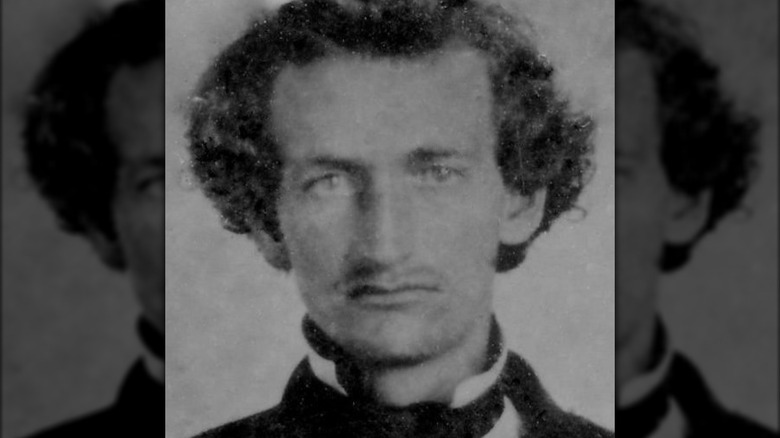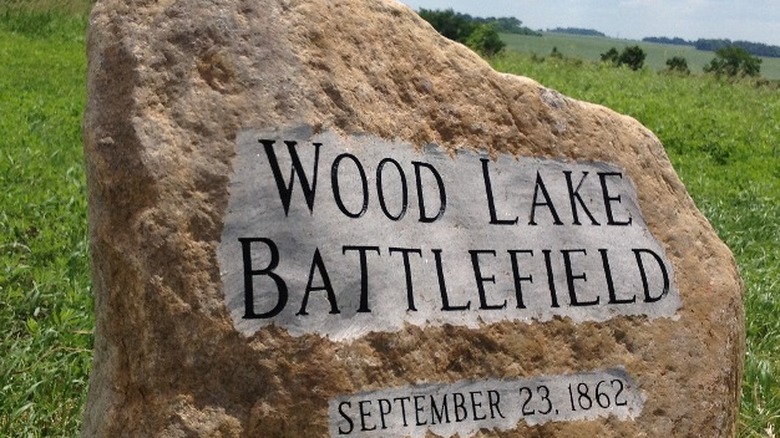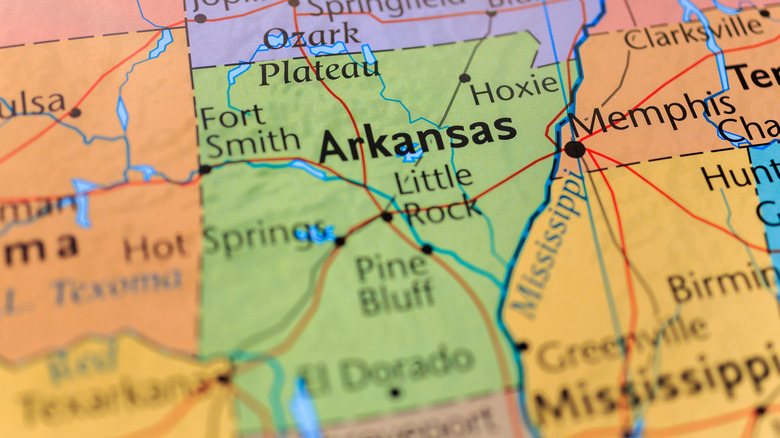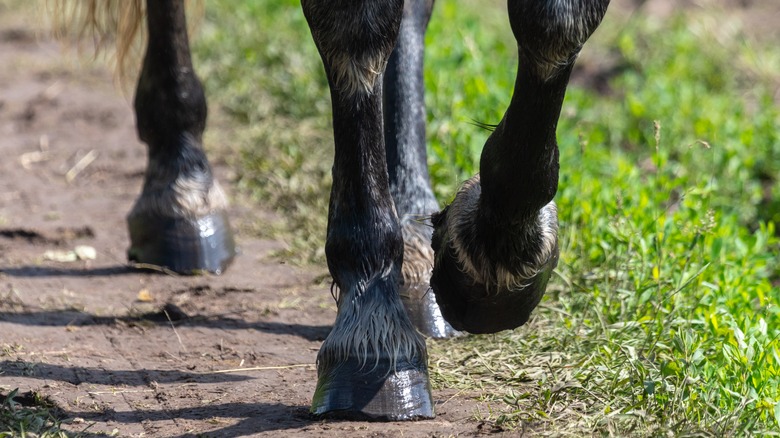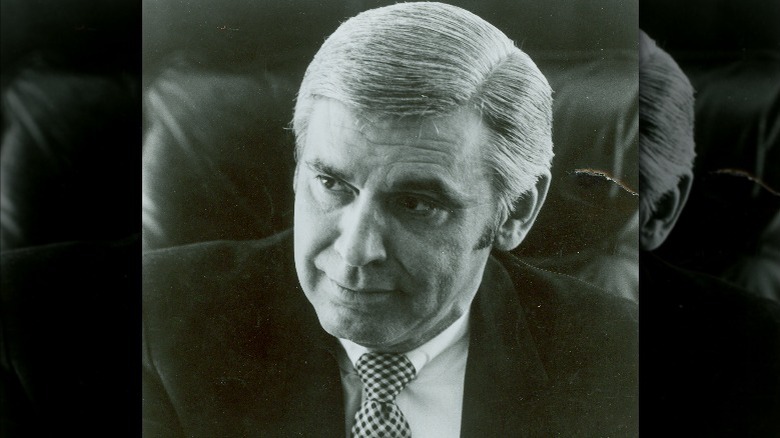The Story Behind The First-Ever Assassination Of A Member Of Congress In US History
In October 1868, James M. Hinds was wandering around Monroe Country, Arkansas doing what politicians like himself did in the 1800s and what they still sometimes do to this day: visiting constituents and trying to drum up support for his party and their candidates. Hinds was a Republican congressman, though his history with the party was somewhat unusual. In the early 1860s, Hinds was a Democrat, but was a big fan of then-president Abraham Lincoln, a Republican. Once Arkansas returned to the Union following the Civil War, Hinds was elected to Congress as a Republican (via the United States House of Representatives).
According to the book "Killing Congress: Assassinations, Attempted Assassinations and Other Violence Against Members of Congress" by Nancy E. Marion, Hinds was gunned down in the middle of the road while soliciting support on October 22, 1868, while traveling with Joseph Brooks, who survived the attack by a disgruntled political rival and went on to become the governor of Arkansas.
James M. Hinds' early life
James Hinds was born in East Hebron New York on December 5, 1833, the last of six children, with four older brothers and one older sister. Hinds grew up on a farm, but his parents hoped that he could get a solid education and go on to do something else. At first, he was home-schooled before moving on to several schools around the state, per "Killing Congress." Once his schooling was behind him, Hinds turned his attention to the west and headed to St. Louis.
In St. Louis, Hinds worked for lawyers, which served as his professional introduction to law and government work. Hinds passed the bar exam and started practicing law, but he didn't stay in St, Louis for long. Instead, he moved to St. Peter, Minnesota, a small town that had only recently been founded before Hinds arrived. He purchased a piece of land for his law practice there.
In St. Peter, Hinds continued practicing law and soon became involved in local Democratic Party activities, and toward the end of the 1850s he married his wife, Anna. The couple had several children.
Hinds starts his political career
Not long after getting married and starting a family, Hinds took the plunge and decided to get into politics. His first foray came in the form of a run for district attorney. According to "Killing Congress" he won the election and wound up serving for three years. In 1862, Hinds joined the Minnesotan forces in the U.S.-Dakota War. The war ended up having a profound effect on the state of Minnesota, according to the Minnesota Historical Society. Hinds was in the middle of the fighting at one of the war's most famous battles, the Battle of Wood Lake.
After the war, Hinds jumped right back onto the political saddle and used connections he had cultivated over the years to get a job as a United States District Attorney for the State of Minnesota. Of course, all of this was happening while the Civil War was going on, and while Hinds had always been a Democrat to that point in his life, he admired President Abraham Lincoln and his efforts to keep the Union intact.
Mr. Hinds goes to Washington
In 1864, Hinds and his family moved to Little Rock, Arkansas. Though still a member of the Democratic Party, Hinds supported Abraham Lincoln's 1863 reelection bid (via "Killing Congress"). The Republican Party's pull on Hinds increased after Lincoln's assassination. After Lincoln's death, his vice-president, Democrat Andrew Johnson, was sworn into office. Not long after that, Johnson tapped Hinds to serve on the Arkansas Supreme Court. Hinds held this position for two years, but in 1867, he ran for an opportunity to serve as a delegate for Pulaski County (where Little Rock is located) to the Arkansas State Constitutional Convention. Hinds won the election and was part of the convention which served as a step toward the state reentering the Union after seceding in 1861 (via Politico).
Arkansas reentered the Union in January 1868 and needed representatives in Congress. There were three seats available and Hinds threw his hat into the ring for one of them, only he did so as a Republican. He wound up winning the election and was off to Washington. There, he helped establish agricultural colleges and was an advocate for the interests of Black southerners and soldiers. While this was no doubt an admirable agenda, it wasn't seen the same way by others in Arkansas.
The 1868 Election
During a break from Congress, Hinds first traveled from Washington, D.C. to New York so he could see his mother for the first time in more than 10 years. After his visit, he traveled back to Arkansas for the state Republican Convention. Though he had just been elected several months earlier, there was another election (which Hinds didn't run in, because he was thinking about running for the U.S. Senate) so that Arkansas' election cycle could get in step with the rest of the nation, per "Killing Congress." There was a lot of tension surrounding this election as it marked the first time in the state's history that Black voters would have a say. However, members of the Ku Klux Klan were actively working to keep this from happening, and there had been outbreaks of violence in the months leading up to the election.
While he wasn't on the ballot himself, Hinds was still a prominent figure in Arkansas Republican politics and traveled around the state to support Ulysses S. Grant's presidential campaign. He did all of this in the face of death threats directed at both himself and his wife, as well as the assassinations of a county registrar and a governor-appointed investigator assigned to the case.
The assassination of James Hinds
Hinds and future Arkansas Governor Joseph Brooks were in Monroe County, Arkansas to deliver speeches in the town of Indian Bay, promoting the rights of Black voters. It was well known by everyone in the area that the two men would be in town, and this included George Clark, a man who was active in the local Democratic Party but was also known to be a member of the Ku Klux Klan. Clark was the Democratic Party's representative in a peace resolution signed with the local Republicans, but he soon made it clear that he had no interest in living up to his end of the deal, per "Killing Congress."
Hinds and Brooks were on horseback riding to the Lambert plantation, where they were to give a speech. Brooks was riding slightly ahead of Hinds when he turned around and saw the congressman speaking to Clark, who was brandishing a shotgun. After the two spoke for a few moments, Clark raised the shotgun and fired a shot at Hinds from just a few feet away. Hinds fell to the ground, and Clark fired at Brooks. Clark retrieved a doctor, and Brooks survived, but not Hinds. Before he died, however, Hinds was able to point his finger at his killer, George Clark.
The aftermath of the assassination
A warrant was soon issued for Clark which charged him with murdering Hinds and attempting to murder Brooks, but he managed to evade law enforcement. He was never apprehended so he never officially faced any of the charges (via "Killing Congress"). Hinds' death gave him the unfortunate distinction of being the first sitting member of congress to be assassinated, per Dickinson College, but tragically, not the last.
Since Hinds' death, Thomas Haughey, John Pinckney, Huey Long, Robert Kennedy, and Larry McDonald were all killed after serving in Congress, while several other former and active members of Congress have faced attempted assassinations, per Congressional Research Service. No other sitting congressperson had been assassinated after Hinds until the assassination of California Representative Leo Ryan in 1978. Ryan was visiting the Peoples' Temple Compound in Jonestown, Guyana, after he was contacted by concerned family members and asked to investigate. Ryan was shot and killed on a nearby airstrip while trying to return to the United States, per PBS.
